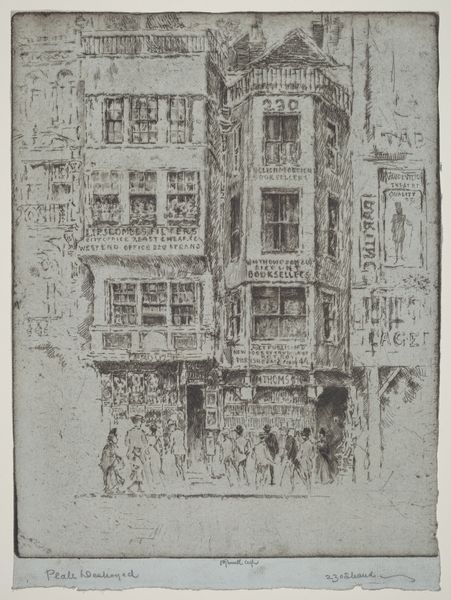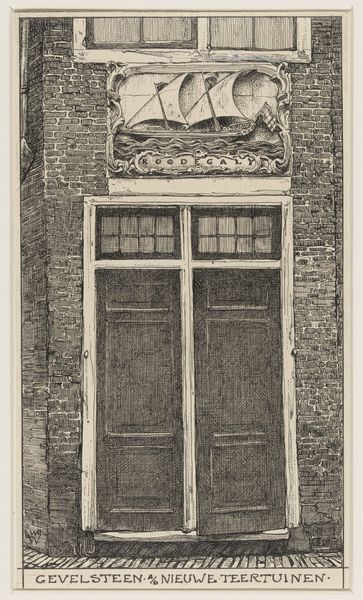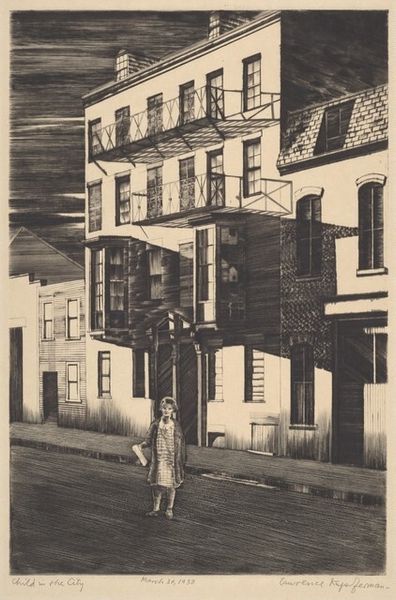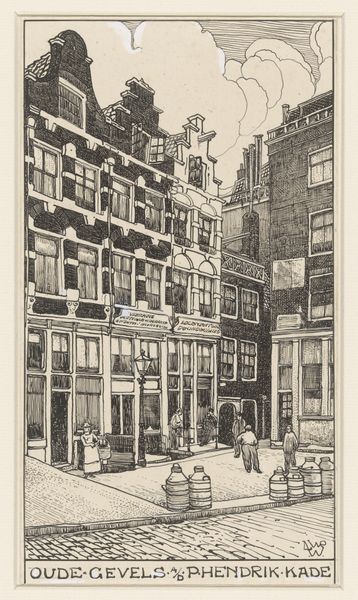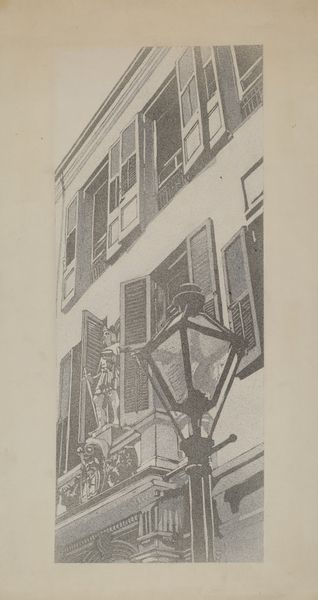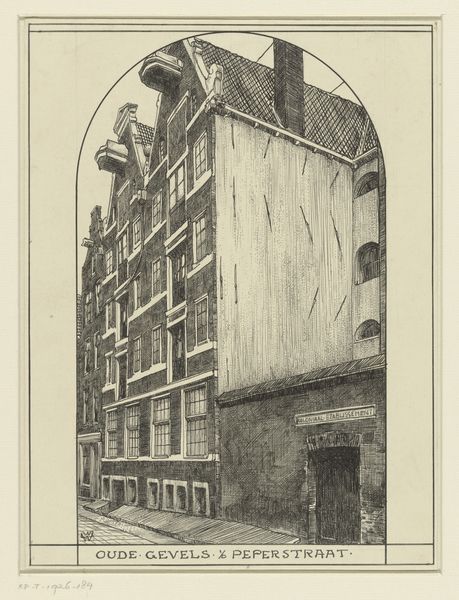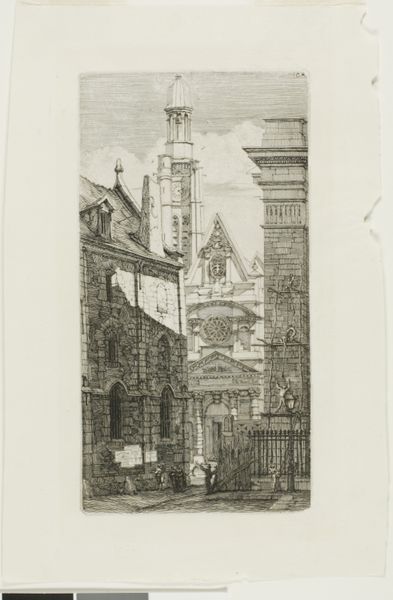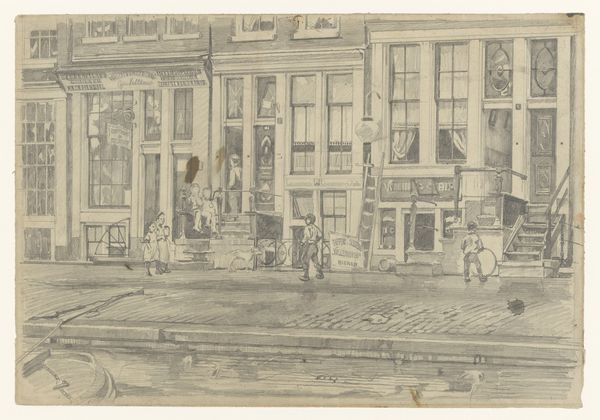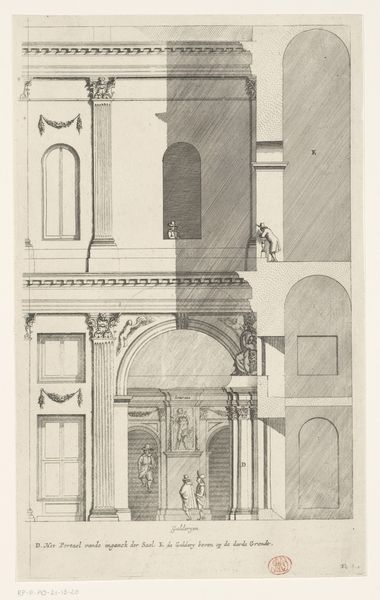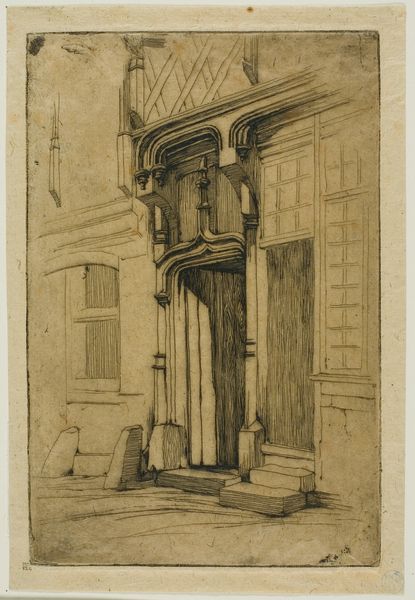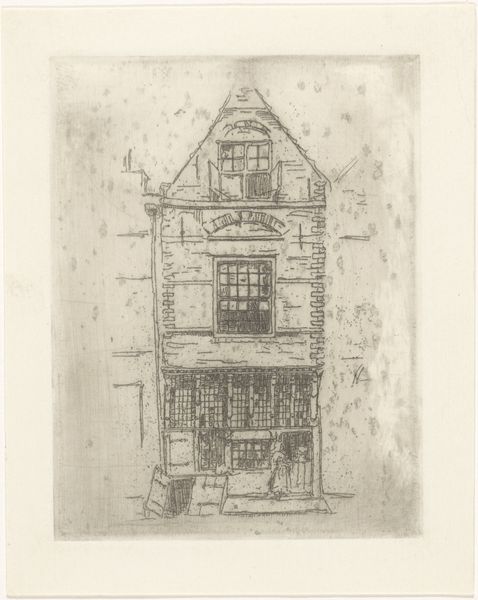
Dimensions: 200 × 77 mm (image/plate); 215 × 85 mm (sheet)
Copyright: Public Domain
Curator: This is "The Unicorn, Stirling," an etching by David Young Cameron, created in 1891. The print is currently held here at the Art Institute of Chicago. Editor: Well, isn't this charmingly gloomy? It has the feeling of peering back into a sooty memory. It feels fragile, almost like a photograph fading. Curator: That fragility is certainly part of its aesthetic appeal. Cameron was a key figure in the Etching Revival. This movement elevated printmaking to the level of high art, emphasizing skillful technique and artistic expression rather than mere reproduction. "The Unicorn, Stirling" captures the spirit of place with a level of detail previously unseen in prints. Editor: I can see that—it's like he’s teasing detail out of shadows. The texture of the building is remarkable given how softly everything else is rendered. That unicorn perched on the pillar seems to oversee everything, like a silent guardian. Curator: The Unicorn is actually the mercat cross of Stirling, a traditional symbol of Scottish burghs indicating their right to hold a market. Cameron’s choice to focus on it speaks to the changing role of such monuments in the rapidly modernizing Scotland of the late 19th century. It marks both the continuity with the past and the transformations occurring within the built environment. Editor: Oh, that adds another layer to the gloomy feeling. It's not just looking back, it's recognizing something essential is receding. All those architectural details –the windows, signs, stonework-- so precisely described, emphasize what is lost as time continues. I think this makes us stop, reflect on where we are from, and what will become of it. Curator: Precisely. The urban landscape becomes more than just setting. It’s an active participant in a narrative about time, change, and identity. Thanks for shedding some perspective here. Editor: My pleasure, it feels poignant that this ghost of a city captures so much about what has survived, in memory.
Comments
No comments
Be the first to comment and join the conversation on the ultimate creative platform.

